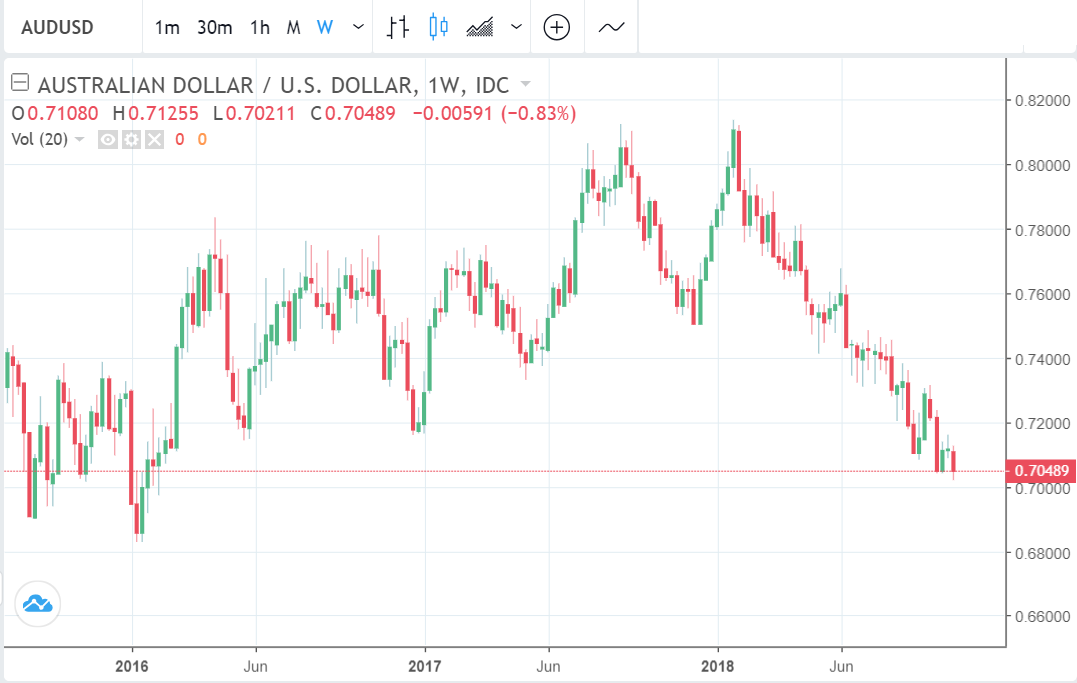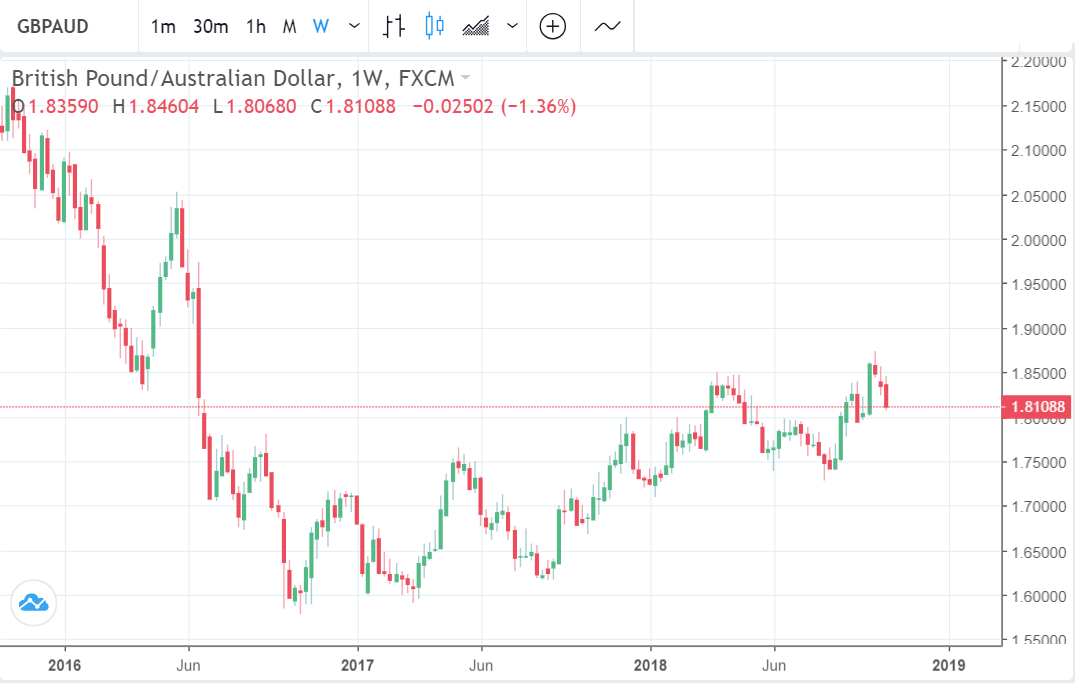Australian Dollar Reaches New Lows as Analysts Look to Inflation and Wage Data

© Greg Brave, Adobe Stock
- AUD/USD plumbs new 2018 lows.
- Inflation data unlikely to turn the tide.
- Analysts more hopeful about wage data.
The Australian Dollar continued its death-spiral Friday when it fell to a new two-year low and analysts are now looking to next week's wage data for clues about where it will head next.
Third-quarter inflation data due out next week is unlikely to improve the Australian Dollar's fortune, according to analysts at TD Securities.
"Even a firmer CPI is unlikely to boost the AUD for long," says Annette Beacher, chief Asia Pacific macro strategist at TD Securities.
An uplift in inflation is key to an eventual recovery by the Australian Dollar because the central bank cannot raise its interest rate until price pressures show signs of picking up. Rising interest rates lift currencies by keeping capital within a country and attracting new inflows. Falling rates do the opposite.

Above: AUD/USD rate shown at weekly intervals.
Australia used to have relatively high-interest rates compared with those elsewhere in the world, particularly in the years following the financial crisis, but the tables have since turned and the country's interest rate is now lower than America's.
The Reserve Bank of Australia (RBA's) base rate has been at a record low of 1.50% for two years but the U.S. Federal Reserve rate has now reached 2.25%.
The US is expected to raise interest rates three times in 2019 while there is only a 50% chance of just one rate hike coming from the RBA next year.
Australian inflation has oscillated within a narrowing range between 3.5% and 1.0% ever since 2009 and has been below the lower boundary of the RBA's 2% to 3% target for much of the time since 2012.
Next week's inflation number is forecast to show a 2.1% rise in the consumer price index during the first-quarter. However, of more importance than this is the third-quarter wage report due out on November 14.

Above: Australian inflation. Source: Trading Economics.
"Looking further ahead, 14 November reveals the much-anticipated Q3 wages report. These are always a marquee event for markets and the RBA, even if they have underwhelmed for years," says Beacher.
Much like most of the developed world, wages in Australia have remained remarkably low in recent years despite decent levels of economic growth.
Wage growth has undershot business sentiment (PMI) measures and defied a steady decline in the unemployment rate even though the two are usually highly correlated.
However, an uplift in wage growth is just as important for the RBA interest rate outlook as the inflation picture because rising wages encourage more consumption, which can support inflation even further down the track.

Above: TD Securities graph showing wage growth, business sentiment and unemployment.
Wages growth has changed little since 2016 and remains constrained within a 1.87% to 2.14% range. This is well below the 3.0% required to encourage the RBA to consider raising interest rates.
"[RBA Governor Lowe] mused that wages growth should be "three point something" by now, perhaps implicitly referring to the Phillips curve," says Beacher. "This 'soft target' was spelled out again in his speech in June when he claimed that 2% wages growth was unlikely to see inflation return to target, and that "wage increases starting with a 3 rather than a 2 is both possible and desirable".
The next batch of wage data will fall well short of 3.0% 'desirable' level if forecasts are to be believed. But Beacher says even if they only rise to 2.3%, the RBA will take notice as it could spell a period of stronger wage inflation on the horizon.
Wage momentum is forecast to pick up more strongly in the final quarter, according to Beacher, after the Fair Work Commission lifted penalty rates for the Retail sector from November. Reports of higher bonus payments and a pick up in Enterprise Agreements (EA) may also help.
Wages in the US, by comparison, are already knocking at the door of the 3.0% level where the RBA would ideally want them, so this could continue putting the AUD/USD rate under pressure as the downtrend remains in force. For GBP/AUD the uptrend is less defined but still dominant.
The Pound is trading according to the ebb and flow of Brexit headlines and has been pressured lower by a risk premium that has been priced in recently to compensate investors holding the Pound for the risk of a "no deal Brexit". If a deal does materialise however, it will reinforce the uptrend in the exchange rate.

Above: Pound-to-Australian-Dollar rate shown at weekly intervals.
Bank-beating exchange rates! Get up to 5% more foreign exchange by using a specialist provider to get closer to the real market rate and avoid the gaping spreads charged by your bank when providing currency. Learn more here




